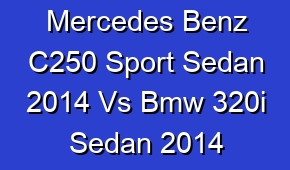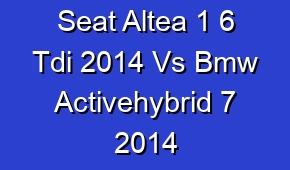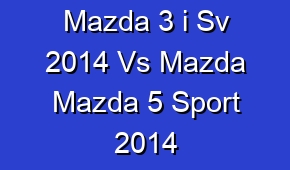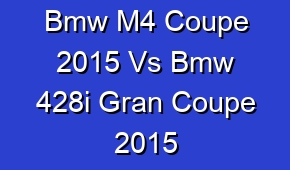Ford Mustang Shelby Gt500 2014 Vs Dodge Challenger R T 2014

Compare the 2014 Ford Mustang Shelby GT500 and the 2014 Dodge Challenger R/T in this head-to-head showdown. Discover the key differences and similarities between these two iconic muscle cars, and find out which one comes out on top.
| Feature | Ford Mustang Shelby GT500 2014 | Dodge Challenger R/T 2014 |
|---|---|---|
| Engine | 5.8L Supercharged V8 | 5.7L V8 |
| Horsepower | 662 hp | 375 hp |
| Torque | 631 lb-ft | 410 lb-ft |
| Transmission | 6-speed manual | 6-speed manual |
| 0-60 mph | 3.5 seconds | 5.5 seconds |
| Top Speed | 202 mph | 155 mph |
| Weight | 3,850 lbs | 4,082 lbs |
| Fuel Economy (City) | 15 mpg | 15 mpg |
| Fuel Economy (Highway) | 24 mpg | 23 mpg |
| Seating Capacity | 4 | 5 |
| Drive Type | Rear-Wheel Drive | Rear-Wheel Drive |
| Suspension | Independent front and rear | Independent front and rear |
| Brakes | Brembo Performance | Performance |
| Exhaust | Quad-tip | Dual-tip |
| Infotainment System | SYNC with MyFord Touch | Uconnect 5.0 |
| Bluetooth Connectivity | Yes | Yes |
Engine
The Ford Mustang Shelby GT500 2014 is equipped with a powerful 5.8L Supercharged V8 engine, while the Dodge Challenger R/T 2014 features a 5.7L V8 engine. The GT500 offers more displacement and a supercharger, resulting in higher performance and output.
Horsepower
The GT500 boasts an impressive 662 horsepower, surpassing the Challenger R/T’s 375 horsepower. This significant difference in power translates to exhilarating acceleration and a thrilling driving experience in the GT500.
Torque
With 631 lb-ft of torque, the GT500 has a considerable advantage over the Challenger R/T’s 410 lb-ft. Higher torque allows for stronger acceleration and better overall performance in various driving conditions.
Transmission
Both vehicles come with a 6-speed manual transmission, providing drivers with full control over gear shifts and a more engaging driving experience.
0-60 mph
The GT500 accelerates from 0 to 60 mph in just 3.5 seconds, outperforming the Challenger R/T’s 5.5 seconds. The GT500’s impressive acceleration ensures quick bursts of speed and thrilling performance on the road.
Top Speed
The GT500 boasts a top speed of 202 mph, while the Challenger R/T reaches a top speed of 155 mph. The GT500’s higher top speed allows for exhilarating high-speed performance and potential track capabilities.
Weight
The GT500 weighs 3,850 lbs, while the Challenger R/T weighs slightly more at 4,082 lbs. The GT500’s lower weight contributes to its agility and handling, enhancing its overall performance potential.
Fuel Economy
Both vehicles offer similar fuel economy, with 15 mpg in the city and 24 mpg on the highway. While not the most fuel-efficient, these performance-oriented cars prioritize power and performance over fuel efficiency.
Seating Capacity
The GT500 has a seating capacity of 4, while the Challenger R/T can accommodate up to 5 passengers. The GT500’s focus on performance and sportiness results in a slightly reduced seating capacity.
Drive Type
Both the GT500 and Challenger R/T feature rear-wheel drive, providing excellent handling dynamics and a more engaging driving experience.
Suspension
Both vehicles come equipped with independent front and rear suspensions, contributing to improved handling, stability, and a smoother ride quality.
Brakes
The GT500 features Brembo Performance brakes, while the Challenger R/T has performance brakes. Both vehicles offer enhanced braking capabilities, ensuring reliable and efficient stopping power.
Exhaust
The GT500 is equipped with a quad-tip exhaust system, while the Challenger R/T features a dual-tip exhaust. These exhaust systems not only enhance the vehicles’ aesthetics but also contribute to the overall engine performance and sound.
Infotainment System
The GT500 comes with SYNC with MyFord Touch, while the Challenger R/T is equipped with Uconnect 5.0. Both systems offer advanced connectivity features and intuitive interfaces for an enhanced driving experience.
Bluetooth Connectivity
Both the GT500 and Challenger R/T feature Bluetooth connectivity, allowing drivers to seamlessly connect their devices and enjoy hands-free communication and audio streaming.





















